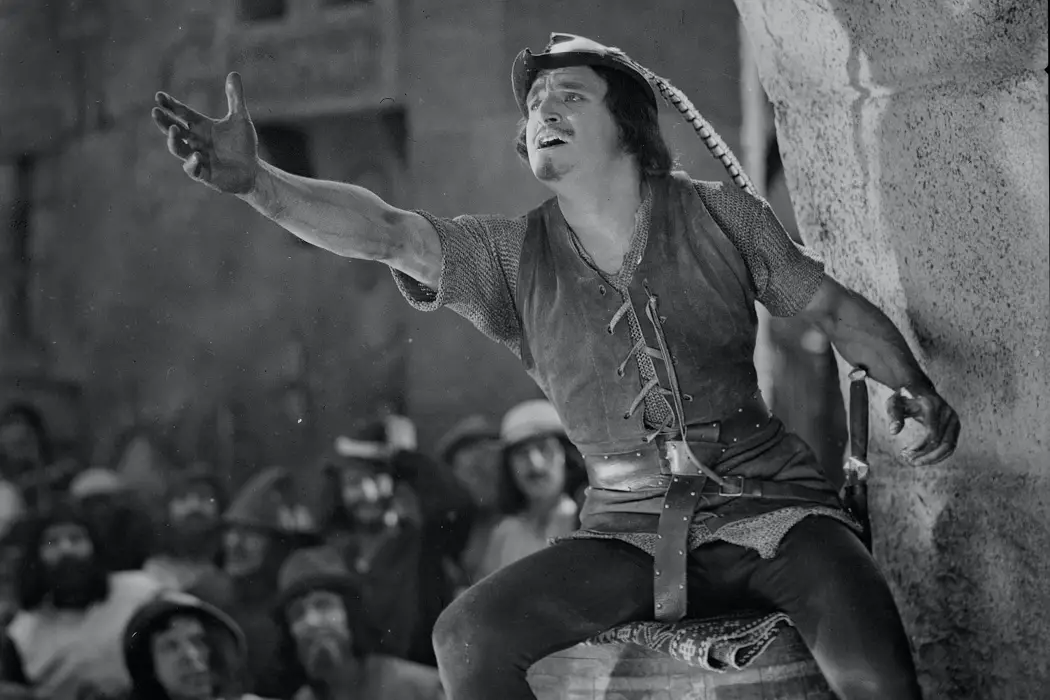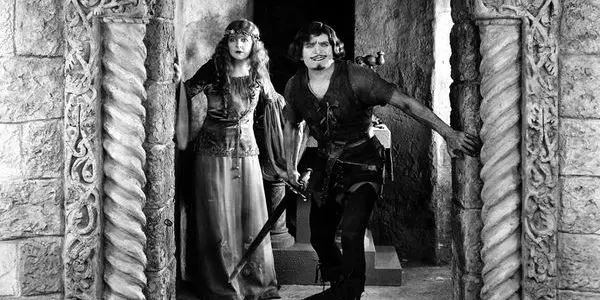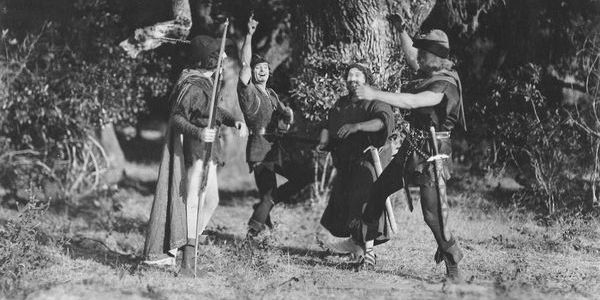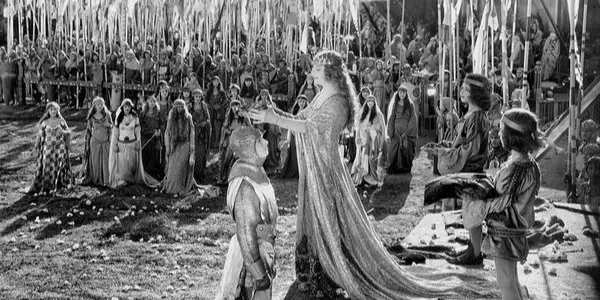A Century In Cinema: ROBIN HOOD (1922)

Jules Caldeira is an Associate Editor for Film Inquiry based…
Welcome to A Century in Cinema, the semimonthly column where I’ll be discussing films from a hundred years ago, the impact they had at the time as well as historically, and how they hold up today. Whether we’re covering timeless classics or obscure gems, follow along as we continue to explore… a century in cinema! WARNING: Hundred-Year-Old SPOILERS ahead!
It seemed fitting to premiere this column with the first film to have a Hollywood premiere: Robin Hood, or as it was originally copyrighted in 1922, Douglas Fairbanks in Robin Hood. Premiering at Sid Grauman’s Egyptian Theater and produced with a staggering estimated budget of one million dollars, this film was intended to be a blockbuster and it succeeded on every front. Written and produced by, as well as starring, silent-film icon Douglas Fairbanks, this two-hour tale went on to become the high-grossing film of the year. While there were a handful of theatrical shorts starring Robin Hood between 1908 and 1913, this film is the first feature-length Robin Hood adventure that had an impact on film and television for years to come.
A Century-Old Tale, as Viewed Today
From the opening scene, it’s clear this film is meant to be a spectacle. We’re treated to the final event of a tournament at the castle before the knights leave to join the Crusades, and does it ever feel like an event! The crowds of extras are massive, and the castle behind them is even grander with a full-scale set of the castle and village having been built for this production.

We’re introduced to the main players: Fairbanks, of course, here as Robert, Earl of Huntingdon prior to becoming Robin Hood; Enid Bennett as the Lady Marian; Paul Dickey as the Earl’s rival, Sir Guy of Ginsbourne; Sam De Grasse as the nefarious Prince John, and Wallace Beery as King Richard (Beery would go on to reprise this role in Richard the Lion-Hearted the following year). Sir Guy and Robert prepare to joust. Of course, despite Guy’s cheating, our hero the Earl of Huntingdon wins! He’s introduced to Marian to receive his crown – while noting he’s afraid of women – and our romance is set.
The film seems to be split evenly between a medieval drama and a classic Robin Hood swashbuckling adventure. The first half, while grand and extravagant, serves mostly to set the stage for the second half of the film. There are bits of comedy sprinkled throughout, including a running gag of King Richard being able to yell at such a volume people are knocked over, but it’s predominantly a drama as Prince John assumes the throne and tries to have his brother Richard and Robert killed. Richard survives the assassination attempt, Robert is freed by his squire, and the two seek refuge in Sherwood Forest.

It’s here where Robert, Earl of Huntingdon, becomes Robin Hood with his Merry Men. This is what the audiences came for: the adventures of the wall-scaling, an ever-grinning enemy of the rich. There are spectacular fight scenes and stunt work, including Robin Hood climbing the chain of a massive drawbridge to enter the castle. Of course, Richard learns of Robin Hood and the misdeeds of his brother, returns to England, and joins the Merry Men in the fight, arriving at the castle just in time to save Robin from certain death and bring him back to Lady Marian and all is, presumably, happily ever after.

Even in 1922, it was clear that this film is meant to be a Douglas Fairbanks vehicle, no different than many summer blockbusters that we see today. Not only was it a financial and critical smash, it also paved the way for the many future iterations of Robin Hood. From Robin Hood and his Merry Men fighting back against Prince John and the Sheriff of Nottingham to Robin’s romance with Lady Marion, many plot points we now know by rote can be seen here. This is also the film where Robin Hood dawns the costume he’s recognized by even a century later, the pointed hat and tunic and armed with a bow and arrow. Fairbanks’ stunt work here also set the precedent for Errol Flynn’s The Adventures of Robin Hood (1938). Though Flynn’s version is a Technicolor talkie in contrast to Fairbank’s black-and-white silent picture, the parallels can still be drawn in the rousing action scenes and bits of physical comedy. Douglas Fairbanks walked so Errol Flynn could run, climb, and Swashbuckle sixteen years later.
Conclusion: Worth the Watch!
For film history buffs, silent film aficionados, or those who like a lavish period piece with equal parts drama and action, add this film to your watchlist. Even today, the comedic moments still land to an extent. Although, it should be noted that as of this writing, the version on Amazon Prime as an accompanying piano score comprised of ragtime standards. While I enjoy Scott Joplin a great deal, it can be a bit jarring watching a 12th-century fight scene as “Maple Leaf Rag” plays. A version of the film with a more appropriate score can be found here on YouTube. Bonus points if you do a Fairbanks/Flynn double-feature.
Have you seen this film before? Had you heard of it before reading this article? Let us know in the comments!
Robin Hood can be streamed on YouTube or Amazon Prime.
Watch Robin Hood
Does content like this matter to you?
Become a Member and support film journalism. Unlock access to all of Film Inquiry`s great articles. Join a community of like-minded readers who are passionate about cinema - get access to our private members Network, give back to independent filmmakers, and more.
Jules Caldeira is an Associate Editor for Film Inquiry based in Sacramento, CA. He's a drummer, part-time screenwriter, and full-time Disney history nerd who can be found on social media when he remembers to post, and can be contacted at [email protected].













